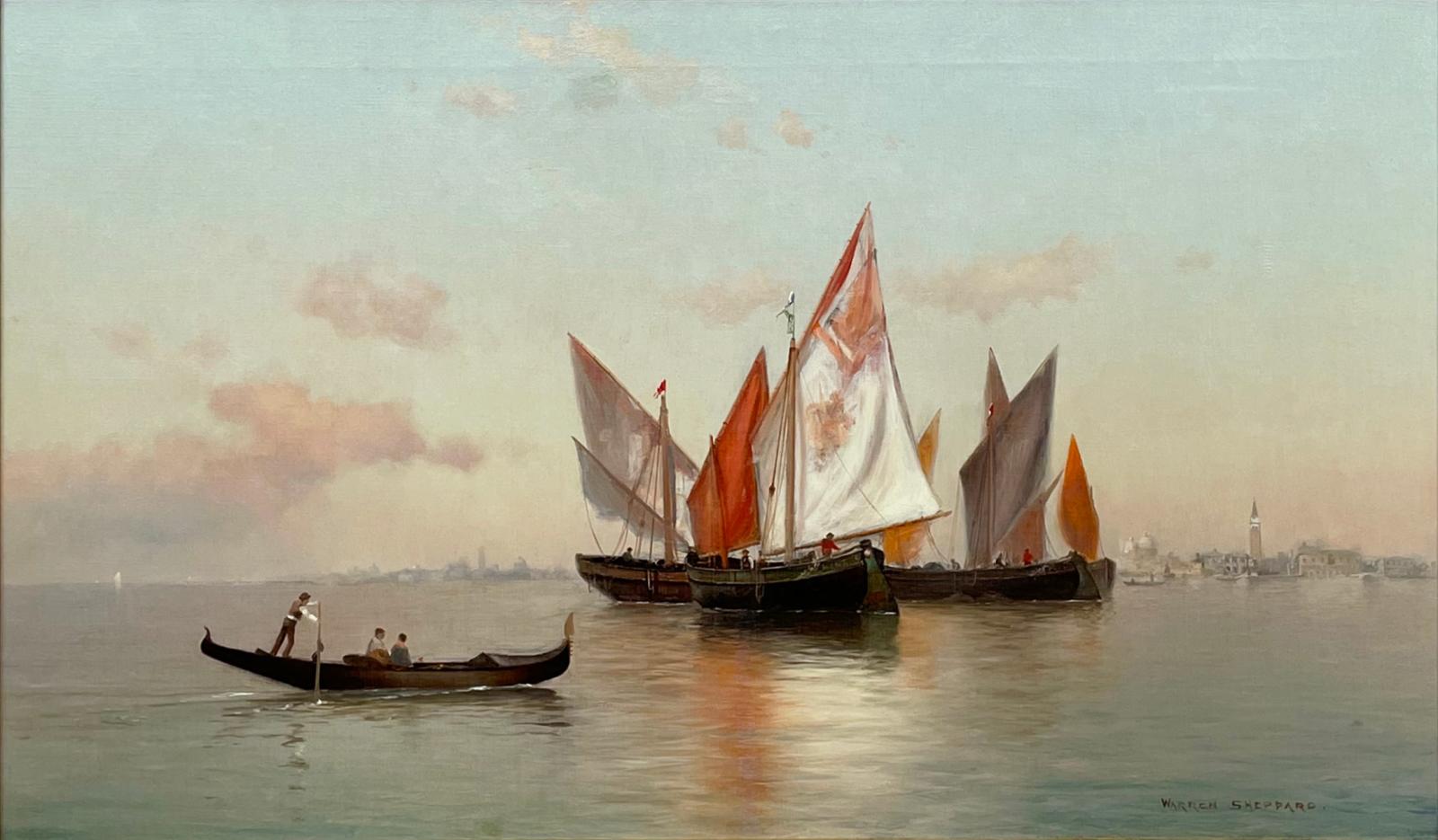artist
Warren Sheppard was born on April 10, 1858 in Greenwich, New Jersey along the Delaware River. This town was known as a seaport and shipbuilding center since the Colonial days. Sheppard’s father was a lumber ship captain and often took his son on trips along the river where the young boy was exposed to the sea and its ways. He studied painting under Mauritz Frederik de Haas (1832-1895), but received his formal artistic training at the Cooper Union, one of the nation's oldest institutions of higher learning, dedicated exclusively to preparing students for the professions of art and architecture. Sheppard was the essence and the personification of the Renaissance Man. He was first and foremost an artist, but he was also a teacher; a yacht designer as well as a yachtsman; and a navigator as well as the author of two books on navigation entitled, Practical Navigation and A Tale of the Sea which he also illustrated. Because Sheppard was intimately acquainted with the sea and its physicality coupled with his detailed knowledge of the design of the ships and their riggings, he was able to secure a number of commissions for illustrations in several well-known periodicals of the time such as the Brooklyn Eagle, the New York Herald Tribune, and the New York Sun.
Description
In Grand Canal, Venice Warren Sheppard depicts the ubiquitous fishing boats of Venice with their colorful sails as well as a lone gondola plying their individual trades along the still waters of the Adriatic Sea. Sheppard completed several works of Venice which suggests that he must have traveled there sometime in the 1890’s. Such Venetian views along the Mediterranean and Adriatic Seas are memorable for their light color palette and for the intimate recording of activity along these bustling waterways and are thus highly prized and particularly coveted. In this picture Sheppard presents us with a charming and somewhat idealized view of the shallow rippling lagoon waters that appear almost sparkling and luminescent while reflecting the fishing boats and the lone gondola that glides towards St. Mark’s Basilica, the most famous of the churches in Venice in the distance and one of the best examples of Byzantine architecture. The painting is illustrative of the type of views which captivated the interest of Sheppard as an artist and as an avid traveler and which records the bustle of the daily lives of the local Venetian peoples. Sheppard employs a somewhat delicate color palette which serves to highlight the romanticized atmosphere surrounding this city of Venice often referred to as the “Queen of the Adriatic”. Reaching towards the pale blue sky dotted with white and violet billowing clouds which occupies a large portion of Sheppard’s canvas is the tower of the impressive Palazzo Ducale rising proudly above the white limestone and pink marble Gothic architecture of the Doge’s Palace. This painting is an enchanting, and picturesque view of a timeless city from another era.









